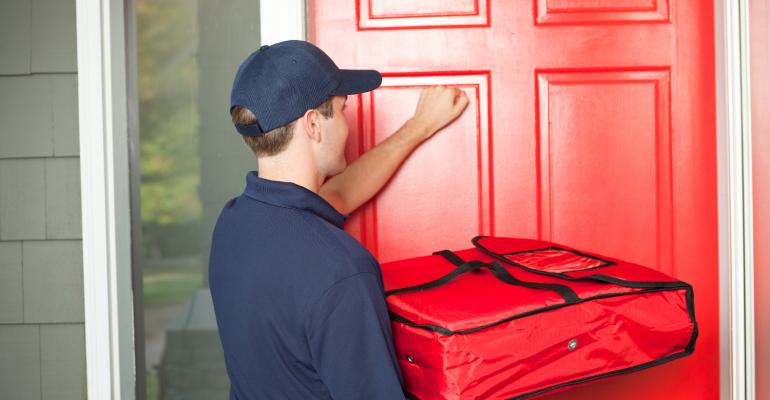Growing up in the restaurant business, I learned from an early age that “the customer is always right” and that nurturing the “regulars” was good business. Today, as restaurants are quickly evolving to take advantage of the new digital era, we know that we must meet customers where they are, without sacrificing quality and service, and we must adapt our menus to satisfy changing tastes. Off-premises dining is here to stay — delivery sales are expected to grow 17% yearly through 2025 according to IMARC Group — and consumers are driving new standards for quality, variety, ease of use and more.
At Nextbite, we recently commissioned an industry study to dig deeper into what consumers really want from delivery. Our study of consumers ages 18-65 revealed that 43% order delivery once a month or more, and 23% do so weekly. The study results have ramifications I want to share with other restaurateurs as you navigate this new frontier.
Delivery for the ages: Prior to the pandemic, food delivery was most frequently used by the 18-34 age group, as they were the most comfortable using mobile apps and had lifestyles that aligned with speed and convenience. But things changed during the pandemic, due to necessity and safety in some cases; ordering delivery food became widely accepted by all ages. While still most popular with millennials (71% order weekly), even my 81-year-old grandpa has become a DoorDash regular and now embraces it as a normal part of his life. Delivery has emerged as a permanent segment of the overall restaurant business and has become routine for all people – so delivery options need to be appealing to a much broader base.
Make it fast and delicious: We asked consumers how they select a restaurant for delivery, and not surprisingly they said speed and variety were important or very important (77%), closely followed by choosing a restaurant they know and trust (76%). Every restaurateur knows that quality is job No. 1 — a consistent, quality food experience also helps ensure digital customers come back, order again and become your own delivery regulars. This type of restaurant loyalty is further confirmed in a related survey question that asked consumers why they order from a restaurant they have tried before. The top results were taste (50%), quality (46%) and ease of re-ordering (39%).
However, this does not mean you can just take your existing menu — undoubtedly delicious — and throw it into a to-go box and expect good results. Delivery-food quality requires a different approach to succeed. One option for existing restaurants is to partner with a virtual restaurant to add in new menu items for delivery only. This allows you to offer specialized menus that are fully optimized for delivery and not an afterthought. At Nextbite, for example, we strategize from the inception to create menus that are craveable, but will also survive transport to arrive delicious every time.
Many people, many apps: There are dozens of online ordering apps today, but most people have a go-to favorite or maybe two. As stated before, we must find our customers where they are; it should not matter if they prefer one app or the other. Our study shows an average consumer uses two delivery apps. This means restaurants must be listed on multiple apps to maximize orders and find people where they are. Don’t rely on customers figuring out how to find you online. Being on delivery apps is key, but being featured and standing out from the competition is also important. Interestingly, delivery apps have grown to rely on virtual restaurants for great content — we are the ones adding loads of exciting new content through creative menus, awesome food photography, promotions and more so consumers come back to see what is new and then order more.
Variety is the spice of life: The consumer study showed food variety as tied with speed as the top factor in selecting a delivery restaurant. This is reaffirmed by the results of the study’s food ordering choices that revealed a strong interest in new and different cuisine types. International/Asian was at the top, followed by healthy and dietary related cuisine such as vegetarian/vegan, gluten-free, etc. Also noted was that there were not enough delivery options for these newer choices. The delivery market is pretty well covered for burgers and pizza, but branching out into new cuisines is a smart play. Further, delivery allows consumers to explore new types of food in their own neighborhood that might not be available in local brick-and-mortar eateries.
Some smaller towns might have only had one Asian delivery offering a year ago and now they have up to a dozen choices online. Also new are celebrity-branded menus. These delivery-only options have exploded and are a popular new way to bring curated cuisine to fans everywhere. For restaurants, the incremental delivery orders help to grow revenues and for the industry it translates to an accelerated expansion of food variety across the country. Our study also found that consumers say trying new restaurants is driven largely by discovery and emotions. The top reasons are being in the mood for something new (38%) and enjoying finding new places (36%), tied with attention-grabbing food photography (also 36%).
Let’s make a deal or promo: Consumers love a great deal, and in the digital world it is easier than ever to offer promos to some or all customers and to try out new ideas and then alter if needed. The study showed that 58% of consumers said it was extremely or very important to select a delivery restaurant because of a promo or discount offered. By engaging with many top delivery apps, restaurants of all sizes have an efficient way to market digitally that includes options such as “Buy one get one free” (BOGO), free delivery, free food giveaways, bonus add-ons and more. The deals and promos help attract new customers, but we have found even regulars are on the lookout for deals and will be open to trying new foods with a little incentive. Some virtual restaurants are even using physical promotions to drive increased consumer awareness, such as our company sponsoring a taco truck activation with free tacos to kick off a new George Lopez taco menu.
As we head into 2022, we can look forward to many new opportunities in the evolving digital era of the restaurant industry. The customer may not always be right, but I believe it is a winning strategy to take our cues from savvy consumers who are embracing change and helping us redefine off-premises dining for the better.
 AUTHOR BIO
AUTHOR BIO
Alex Canter is CEO of Nextbite, as well as a restaurant industry innovator, in-demand speaker and passionate advocate for restaurant operators and workers. He is the fourth generation of Canter’s Deli in Los Angeles, where he and his team invented Ordermark/Nextbite, a restaurant technology company that helps thousands of restaurants succeed with delivery. Ordermark recently announced the close of its $120M funding round led by SoftBank. He is a recipient of the Forbes 30 Under 30





